What does smallpox do to the body. Smallpox: Pathogenesis, Symptoms, and Impact on the Human Body
How does smallpox enter and spread throughout the body. What are the key stages of smallpox infection. Why is smallpox considered one of the most devastating diseases in human history. How does the immune system respond to smallpox. What makes smallpox particularly dangerous for pregnant women.
The Entry and Initial Infection of Smallpox
Smallpox, caused by the variola virus, typically enters the body through the respiratory tract. The virus first infects the oropharyngeal or respiratory mucosa, establishing its initial foothold without causing immediate symptoms or visible lesions. This silent invasion marks the beginning of the primary incubation period.
During this early stage, patients are not yet infectious. The virus begins to replicate and spread, preparing for its devastating assault on the body. It’s crucial to understand that the absence of symptoms during this phase contributes to the virus’s ability to spread undetected.
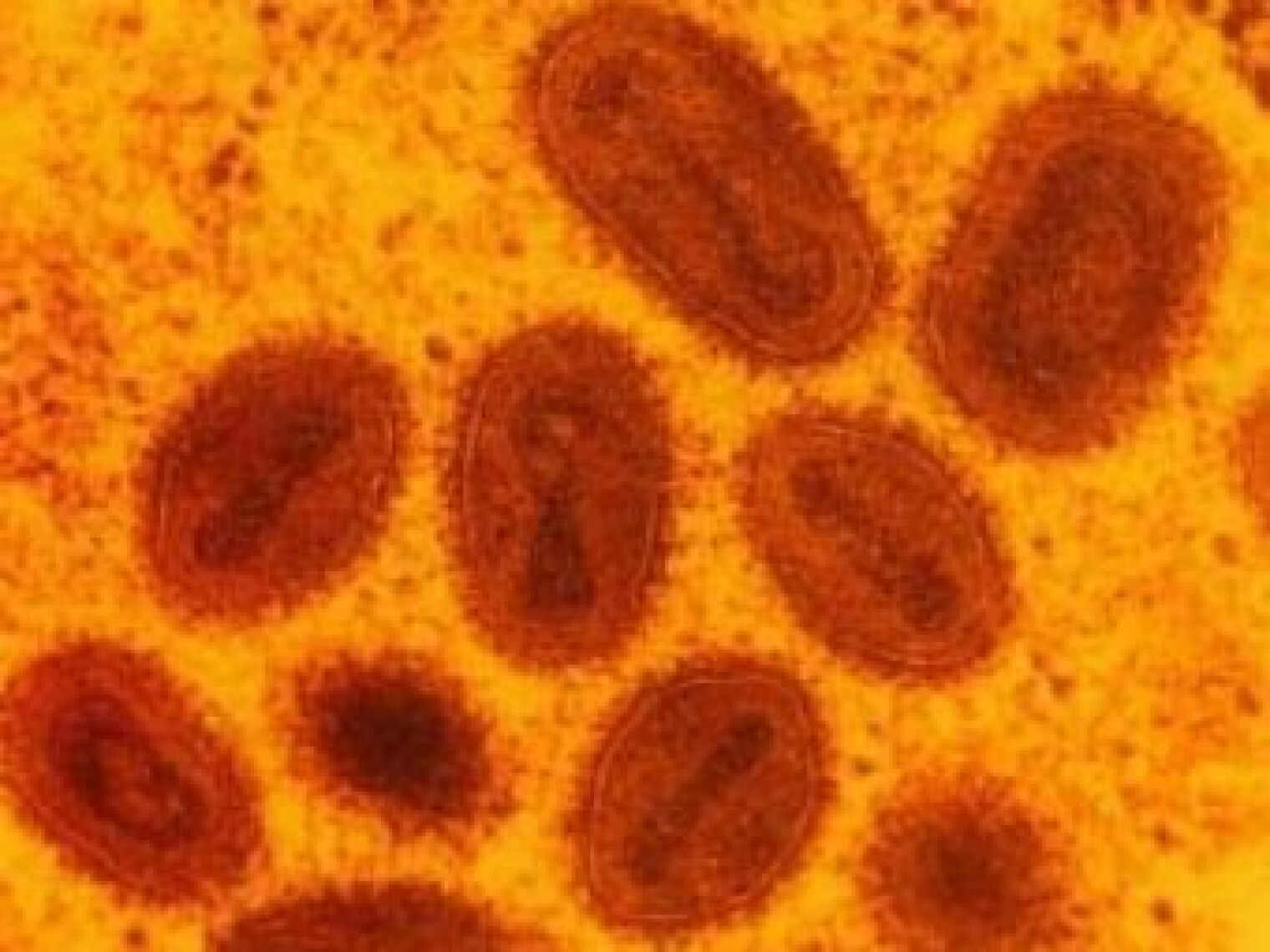
Modes of Transmission
Contrary to popular belief, scab material is not the primary source of transmission. Instead, secretions from the mouth and nose play a more significant role in human-to-human spread. As the disease progresses, patients become most infectious during the first week of rash appearance, when they may unknowingly expel virions through coughing.
- Respiratory droplets are the main transmission route
- Patients are most contagious during the early rash stage
- Scabs contain virus but are less likely to spread infection
The Dissemination Process of Smallpox
Once the variola virus establishes its initial infection, it embarks on a complex journey through the body. This process of dissemination is not fully understood, but research on related orthopoxviruses, particularly mousepox (ectromelia), provides valuable insights.
In mousepox, the virus follows a specific path:
- Moves from the respiratory tract to the liver and spleen
- Replicates extensively in these organs, causing extensive damage
- Releases large numbers of virions into the bloodstream
- Infects secondary organs including skin, kidneys, lungs, and intestines
While the exact replication sites in human smallpox infection remain unclear, this model offers a framework for understanding the disease’s progression.
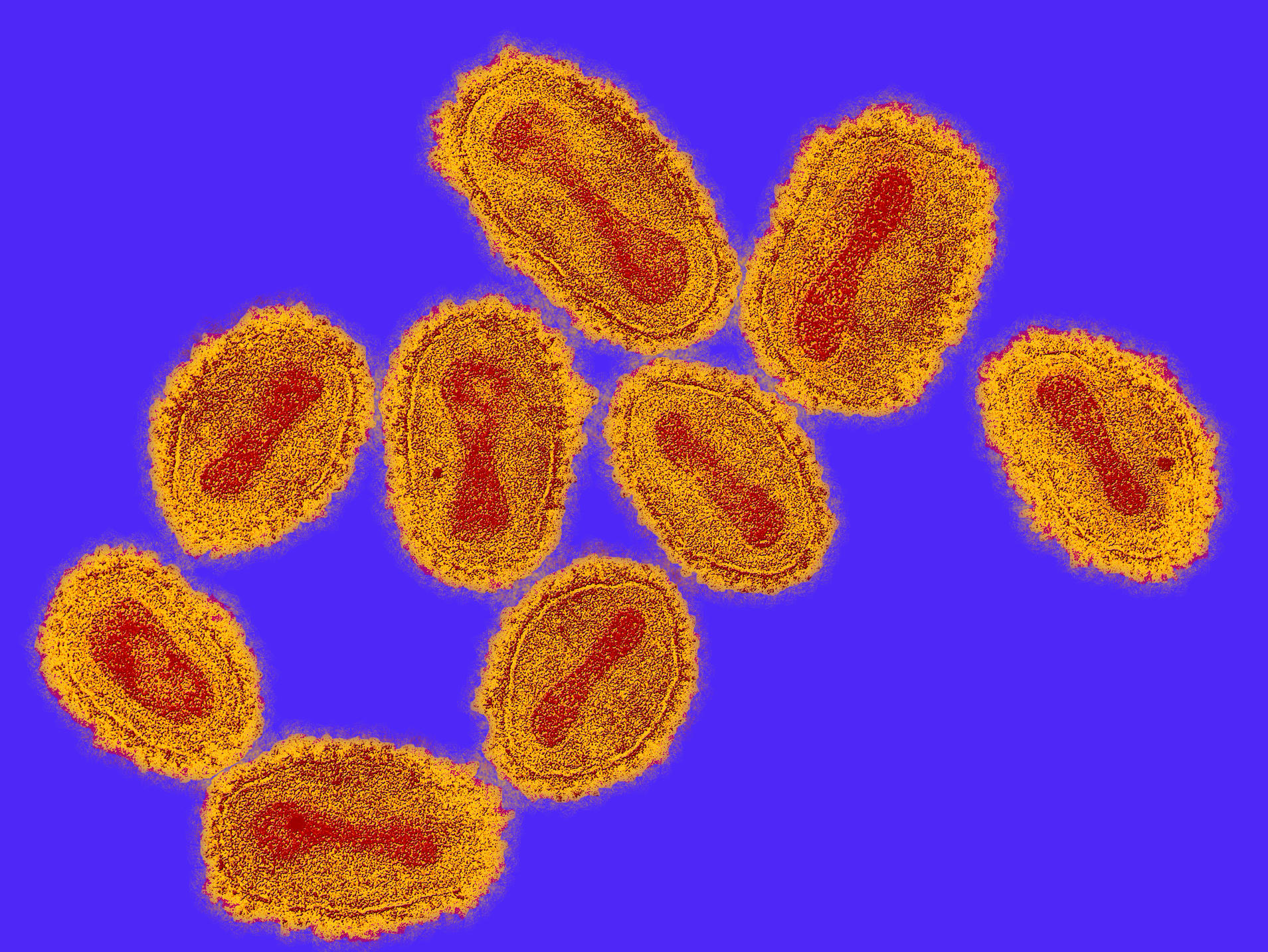
The Race Against Time
As the virus multiplies and spreads, there’s a critical window of 2-3 days where it reaches high concentrations before visible changes appear in infected organs. This silent multiplication phase underscores the importance of early detection and intervention in managing smallpox outbreaks.
Clinical Manifestations and Stages of Smallpox
The end of the incubation period is marked by the sudden onset of high fever, followed by the appearance of characteristic skin lesions. This transition signals the beginning of the symptomatic phase and the period of highest infectivity.
The Rash Progression
The smallpox rash evolves through several stages:
- Macular stage: Flat, red spots appear
- Papular stage: Raised bumps develop
- Vesicular stage: Fluid-filled blisters form
- Pustular stage: Blisters fill with pus
- Crusting stage: Pustules dry and form scabs
This progression occurs over approximately two weeks, with each stage lasting about 1-2 days. The distribution and density of the rash can vary, influencing the severity and prognosis of the disease.
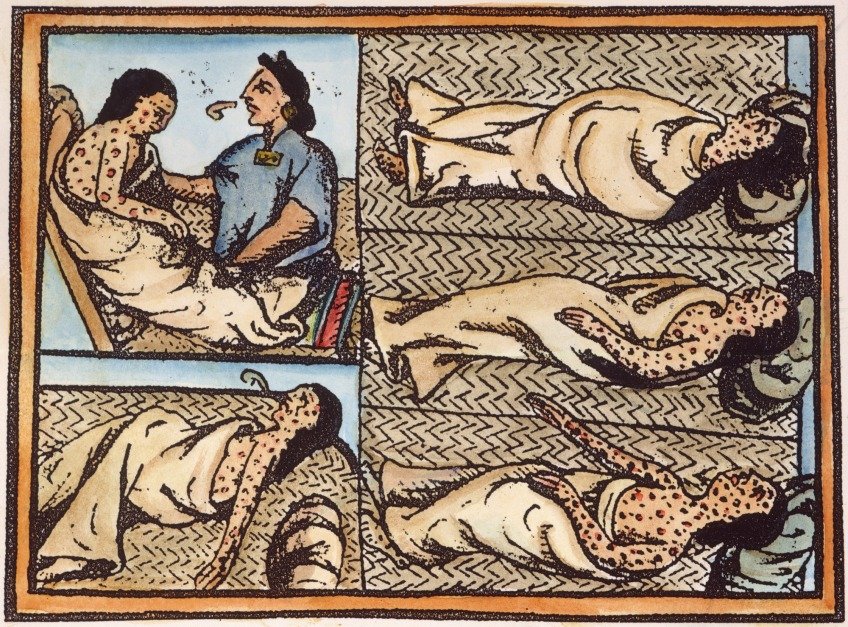
Immune Response to Smallpox Infection
The body’s defense against smallpox involves both innate and adaptive immune responses. These mechanisms work together to limit viral replication and clear the infection.
Innate Immunity
The innate immune system provides the first line of defense against smallpox. This includes:
- Physical barriers like skin and mucous membranes
- Inflammatory responses
- Production of antiviral substances like interferon
Adaptive Immunity
As the infection progresses, the adaptive immune system becomes activated, generating:
- T cell responses targeting infected cells
- B cell responses producing antibodies against the virus
These specific immune responses are crucial for eventual viral clearance and recovery. They also form the basis for long-lasting immunity in survivors.
Smallpox in Vulnerable Populations
Certain groups face heightened risks from smallpox infection, with pregnant women being particularly vulnerable.
Pregnancy and Smallpox
Smallpox poses severe threats to both mother and fetus:
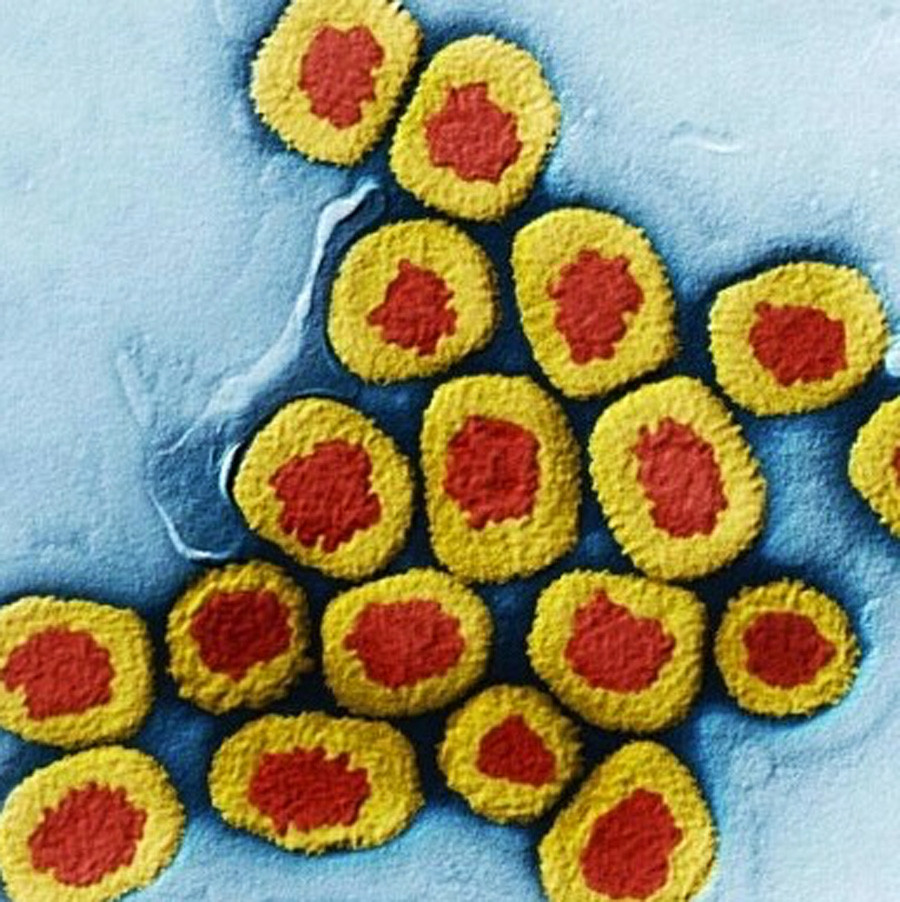
- Increased risk of abortions and stillbirths
- High mortality rate for newborns (majority dying within 15 days)
- Approximately half of babies acquiring infection in utero or during delivery
These statistics highlight the devastating impact smallpox can have on maternal and fetal health, underlining the importance of prevention and early intervention in pregnant women.
Unusual Manifestations: Inoculation Smallpox and Vaccination Complications
While respiratory transmission is the most common route of infection, smallpox can also enter the body through the skin, either accidentally or intentionally. This form, known as inoculation smallpox, follows a slightly different course:
- Local skin lesion appears on day 3-4
- Fever and constitutional symptoms begin on day 8
- Rash appears on day 10-11, typically less severe than natural smallpox
This milder course of disease formed the basis for variolation, an early form of immunization that predated modern vaccination techniques.
Vaccination Complications
While vaccinia vaccination has been crucial in eradicating smallpox, it can rarely lead to complications:

- Disseminated vaccinia: A systemic infection with generalized rash
- Progressive vaccinia: Failure of the inoculation site to heal, sometimes with secondary lesions
These complications primarily affect individuals with compromised immune systems, highlighting the importance of careful screening before vaccination.
The Legacy of Smallpox Research
Our understanding of smallpox pathogenesis comes from three main sources:
- Studies using material from human patients
- Experiments with variola virus infection in non-human primates
- Model infections in mice, rabbits, and monkeys using related orthopoxviruses
This multi-faceted approach has provided valuable insights into the disease’s mechanisms, despite the challenges of studying a now-eradicated human pathogen.
Ongoing Research Challenges
While smallpox has been eradicated, research continues to be important for several reasons:
- Preparedness against potential bioterrorism threats
- Understanding related poxviruses that still affect humans and animals
- Developing safer vaccines and antiviral treatments
The ethical and safety considerations surrounding live variola virus research remain topics of ongoing debate in the scientific community.
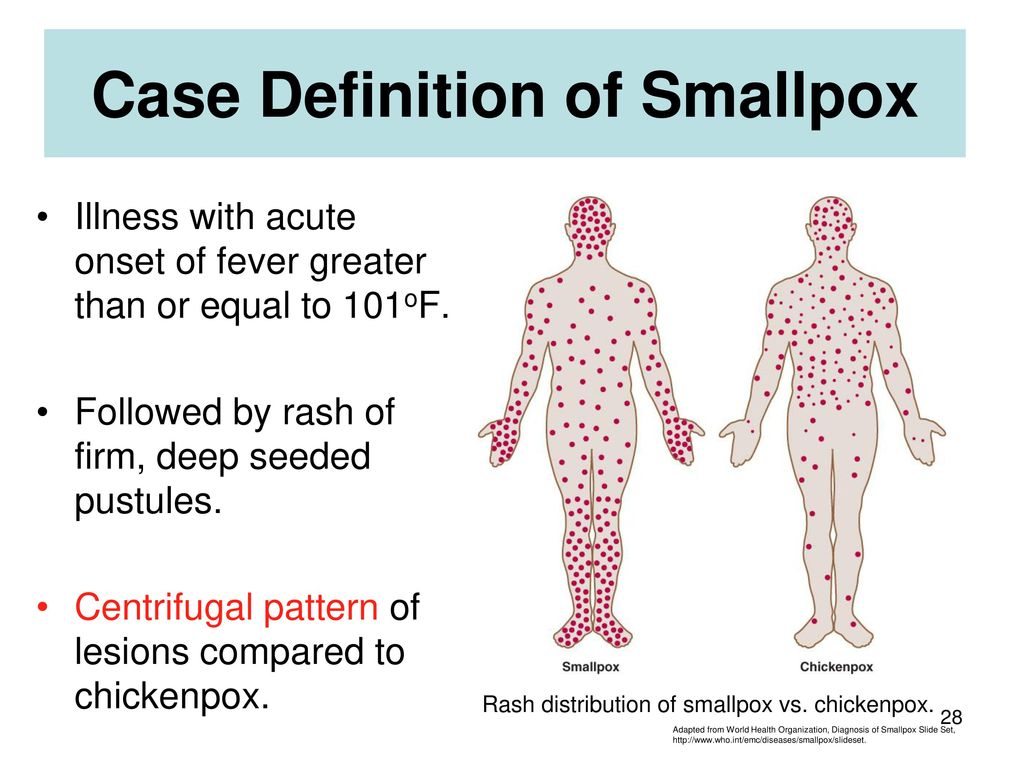
Smallpox: A Historical Perspective
Smallpox has played a significant role in human history, shaping populations, influencing warfare, and driving medical innovations. Its eradication in 1980 stands as one of the greatest achievements in public health.
Key Historical Facts
- Earliest evidence of smallpox dates back to ancient Egyptian mummies
- The disease played a crucial role in the Spanish conquest of the Americas
- Edward Jenner’s development of the smallpox vaccine in 1796 marked a turning point
- The World Health Organization launched its global eradication campaign in 1967
Understanding the historical context of smallpox helps appreciate the magnitude of its impact and the significance of its eradication.
Modern Implications of Smallpox Research
Although smallpox no longer occurs naturally, research into its pathogenesis continues to yield valuable insights with broader applications.
Applications in Modern Medicine
Smallpox research contributes to:
- Development of antiviral therapies for related viruses
- Understanding of immune responses to viral infections
- Strategies for rapid response to emerging infectious diseases
- Improvements in vaccine technology and delivery
These advancements demonstrate how studying a historical disease can inform current and future medical challenges.
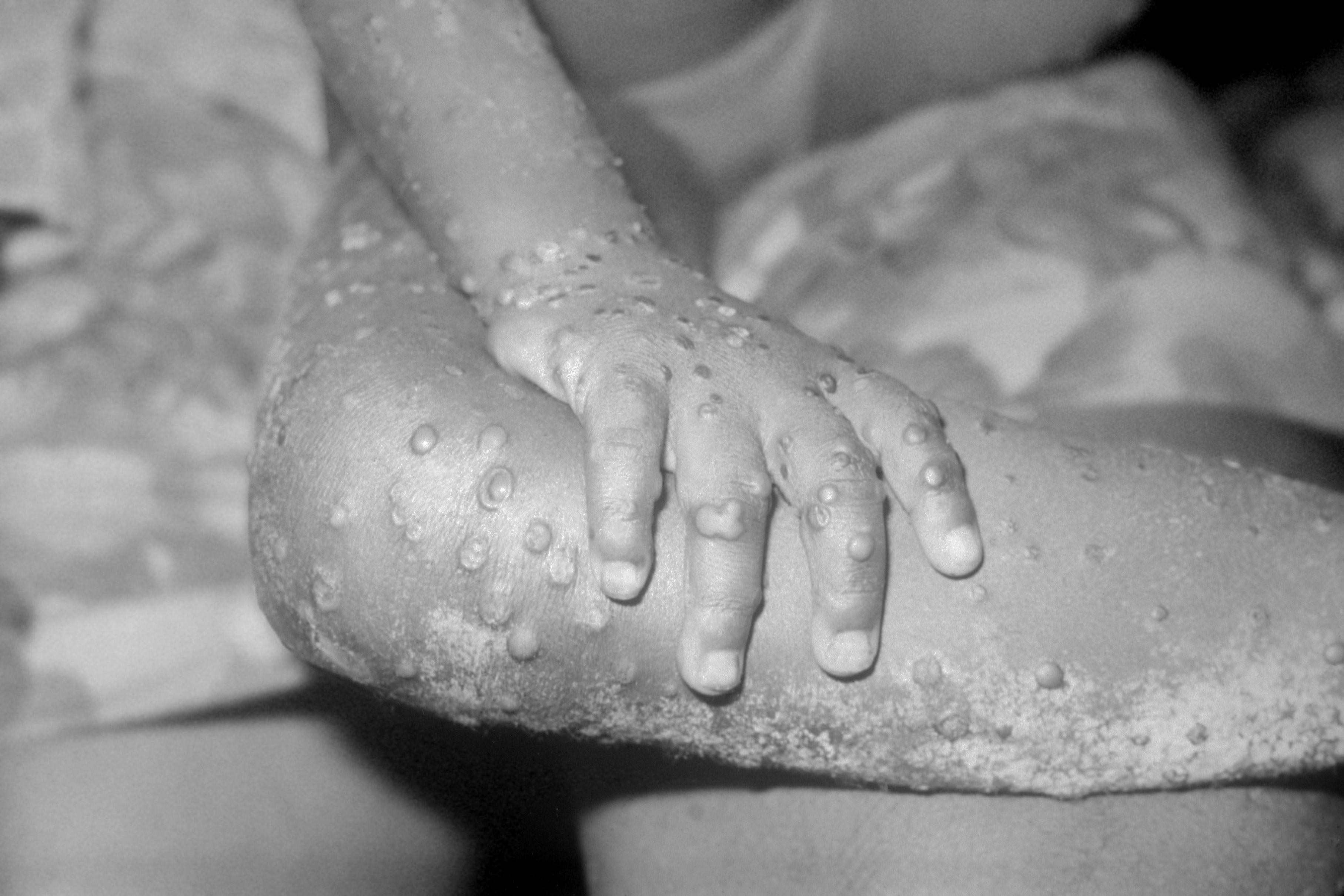
Biodefense Considerations
The potential use of smallpox as a biological weapon remains a concern for global security. Ongoing research aims to:
- Improve diagnostic capabilities for rapid detection
- Develop more effective and safer vaccines
- Create treatment options for potential outbreaks
These efforts ensure preparedness against the unlikely but catastrophic scenario of smallpox reemergence.
Lessons from Smallpox for Future Pandemics
The successful eradication of smallpox provides valuable lessons for managing other infectious diseases and potential pandemics.
Key Takeaways
- Importance of global cooperation in disease control
- Value of widespread vaccination programs
- Need for robust surveillance and rapid response systems
- Significance of public health education and community engagement
These lessons continue to inform strategies for tackling current and future global health challenges.
Applying Smallpox Insights to Modern Outbreaks
The experience with smallpox has influenced approaches to managing other diseases:

- Development of ring vaccination strategies
- Importance of contact tracing in containing outbreaks
- Recognition of asymptomatic spread in disease transmission
- Understanding the role of superspreader events
These concepts, first explored in the context of smallpox, remain relevant in managing modern infectious disease outbreaks.
The Future of Poxvirus Research
While smallpox itself is eradicated, research into poxviruses continues to be a dynamic field with important implications for human and animal health.
Emerging Poxvirus Threats
Several poxviruses remain of concern:
- Monkeypox: Increasingly reported in humans, particularly in Africa
- Cowpox: Occasionally infects humans through animal contact
- Vaccinia: Used in smallpox vaccines, can rarely cause complications
Studying these viruses helps maintain readiness against poxvirus threats and informs broader virology research.
Poxviruses as Therapeutic Vectors
The unique properties of poxviruses are being explored for medical applications:
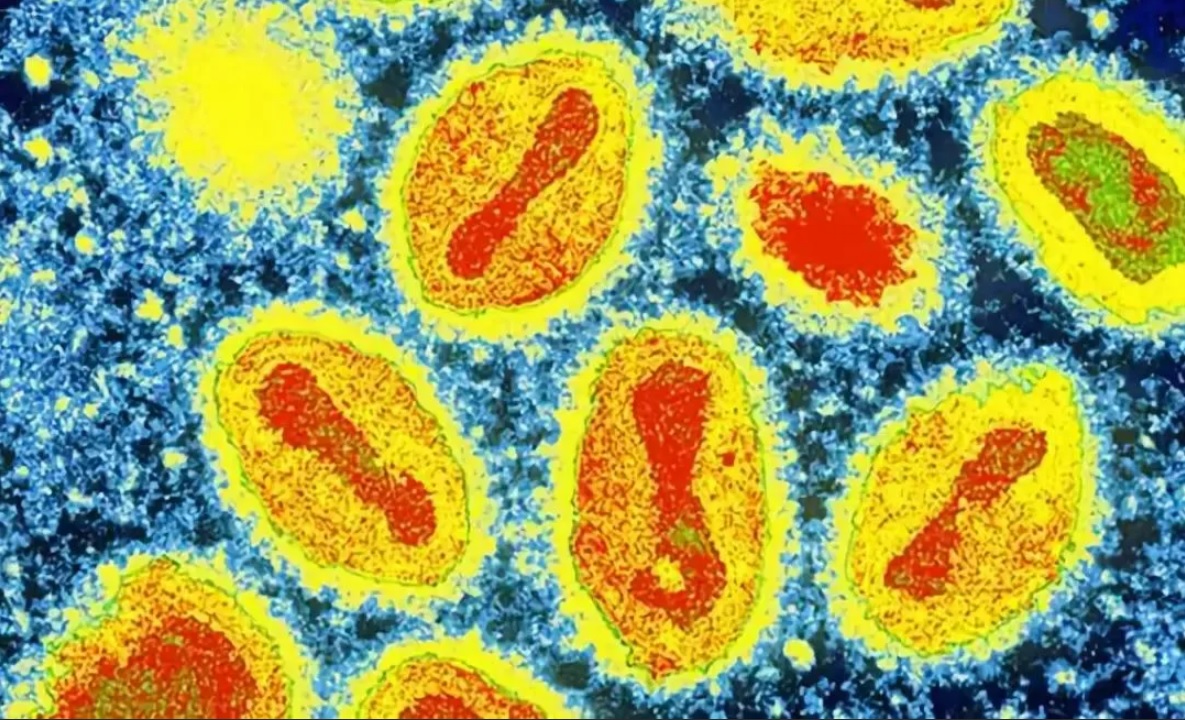
- Development of cancer-fighting oncolytic viruses
- Use as vectors for delivering vaccines against other diseases
- Potential in gene therapy applications
These innovative approaches demonstrate how research into a historical pathogen can lead to unexpected medical breakthroughs.
Ethical Considerations in Smallpox Research
The continued study of smallpox, particularly involving live variola virus, raises important ethical questions for the scientific community.
Key Ethical Dilemmas
- Balancing research benefits against risks of accidental release
- Ensuring equitable access to any new treatments or vaccines developed
- Managing dual-use research with potential for misuse
- Preserving variola virus stocks: necessity vs. safety concerns
These issues require ongoing dialogue between scientists, policymakers, and ethicists to ensure responsible research practices.
Transparency and International Cooperation
To address ethical concerns, the following measures are crucial:
- Maintaining strict biosafety protocols in all smallpox-related research
- Ensuring international oversight and transparency in research activities
- Promoting open sharing of research findings while safeguarding sensitive information
- Developing clear guidelines for the responsible conduct of poxvirus research
These practices help maintain public trust and ensure that smallpox research continues to benefit global health security.
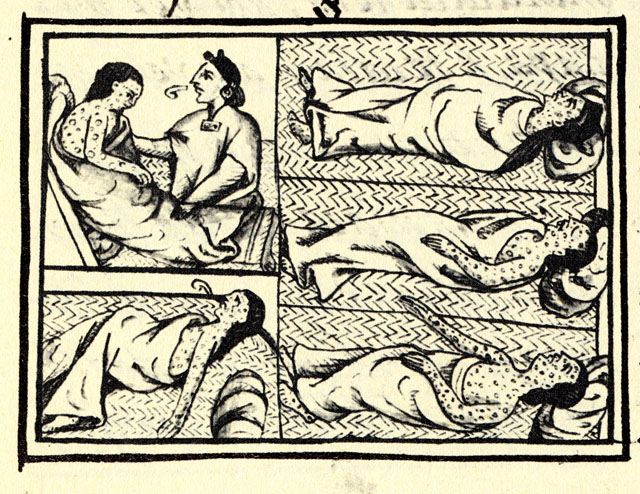
Clinical Features of Smallpox – Assessment of Future Scientific Needs for Live Variola Virus
The term pathogenesis is used to describe the mechanisms involved in the production of disease, from the spread of infection through the body to the molecular and physiological responses of host cells to a pathogen. Immune response is the constellation of mechanisms by which the host limits continued multiplication of the pathogen. These mechanisms include T cell and B cell responses that are specific for the organism and are acquired during the course of the infection. Some of these mechanisms are innate, while others are adaptive.
The pathogenesis of smallpox has been studied in three ways: (1) by using material from human patients; (2) by conducting experiments with variola virus infection of nonhuman primates; and (3) by conducting experiments with model infections in mice, rabbits, and monkeys using related orthopoxviruses. Investigations in human subjects prior to eradication were limited to virological and serological tests of hospitalized smallpox patients or case contacts and case histories. Much of our understanding of the pathogenesis of generalized orthopoxvirus infections is based on studies carried out with ectromelia (mousepox).
Much of our understanding of the pathogenesis of generalized orthopoxvirus infections is based on studies carried out with ectromelia (mousepox).
Entry and Infection
The usual entry of variola virus is through the respiratory tract with infection of the oropharyngeal (mouth) or respiratory (trachea and lung) mucosa. Secretions from the mouth and nose, rather than scab material, are the most important source of human-to-human transmission. The initial infection in the oropharynx or respiratory tract produces neither symptoms nor local lesions, and patients are not infectious until an oropharyngeal enanthem appears at the end of the primary incubation period. Transmission to others is generally through coughing out of virions in oropharyngeal secretions. Patients are most infectious during the first week of rash. Scab material forms as the rash dries and usually consists of large fragments of cellular debris, with virions bound within a dense, fibrous mesh containing a large amount of the antiviral substance interferon.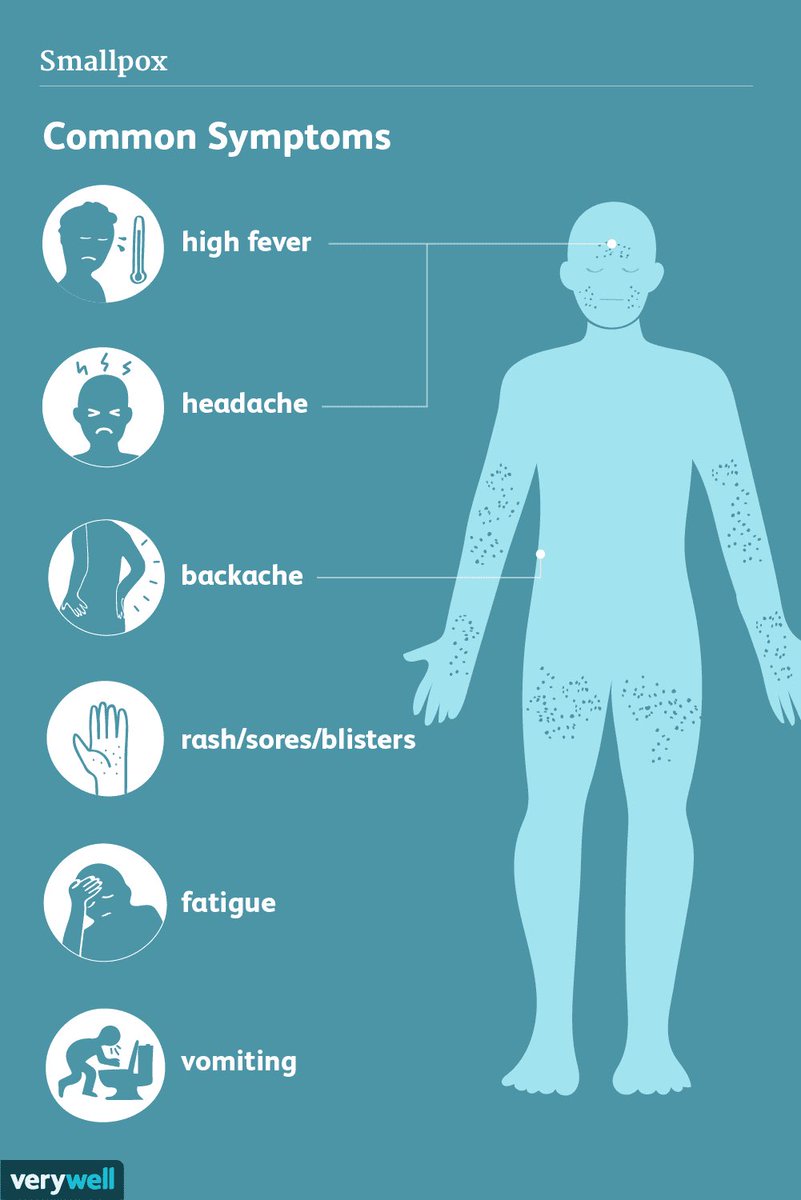 Infectious virus is difficult to release from scabs except by mechanical grinding.
Infectious virus is difficult to release from scabs except by mechanical grinding.
Inoculation smallpox sometimes occurs when variola virus is introduced into the skin either intentionally or accidentally. A local skin lesion appears on the third or fourth day, with fever and constitutional symptoms beginning on the eighth day. The incubation period is typically 2 to 3 days shorter than in natural smallpox. The rash, which is usually less severe than in naturally acquired smallpox, appears on the tenth or eleventh day. The milder course of disease stemming from deliberate variola inoculation was the basis for variolation, which preceded Jenner’s use of cowpox and the subsequent use of vaccinia inoculation as a preventive for smallpox (as discussed further below).
Very rarely, vaccinia vaccination produces dissemination vaccinia, a systemic infection characterized by malaise combined with a generalized rash similar to inoculation lesions. In another condition, called progressive vaccinia, the inoculation lesion fails to heal, and secondary lesions sometimes appear elsewhere. Both conditions are problematic predominantly for individuals with deficient immune mechanisms.
Both conditions are problematic predominantly for individuals with deficient immune mechanisms.
Variola major caused severe problems in pregnant women. Abortions and stillbirths were frequent, and a majority of the babies born to infected women in hospital died within 15 days, most within 3 days. About half of the babies acquired infection in utero or at the time of delivery.
Dissemination
The appearance of high fever and then lesions on the skin marks the end of the incubation period. Smallpox pathogenesis is a poorly understood series of events in which the virus first disseminates locally, then through the lymphatic system, and finally to the skin without affecting vital organs. In mousepox, the primary source of molecular studies of orthopoxvirus pathogenesis, the infection moves from the respiratory tract to the liver and spleen following breach of the macrophage barrier. The virus then replicates extensively in both organs, which produces semiconfiuent necrosis. About a day after infection of the liver and spleen, large numbers of virions are liberated into the bloodstream, leading to secondary infection of the skin, kidneys, lungs, intestines, and other organs. This phase is followed by an interval of 2 or 3 days during which the virus replicates and reaches a high titer before visible changes are apparent in the infected organs.
About a day after infection of the liver and spleen, large numbers of virions are liberated into the bloodstream, leading to secondary infection of the skin, kidneys, lungs, intestines, and other organs. This phase is followed by an interval of 2 or 3 days during which the virus replicates and reaches a high titer before visible changes are apparent in the infected organs.
As noted earlier, mousepox is unusual among the generalized orthopoxvirus infections in that the spleen and liver are the major target organs for viral replication. There is inadequate evidence regarding exactly where the virus replicates during a smallpox infection. The likely sites for viral replication are the lymphoid organs (spleen, bone marrow, lymph nodes), but extensive necrosis does not occur in those sites. At this stage, the virus in the blood is largely cell-associated.
The Rash
The primary event that triggers the production of focal lesions in orthopoxvirus infections is the localization of virus particles in the small dermal blood vessels. Subsequently, adjacent epidermal cells are infected, and skin lesions develop. The earliest change is dilation of the capillaries in the papillary layer of the dermis, followed by swelling of the endothelial cells in the walls of these vessels and subsequently perivascular cuffing with lymphocytes, plasma cells, and macrophages. Following these early changes, the cells of the Malpighian layer become swollen and vacuolated. The cells continue to increase in size, and the nucleus usually disappears or is lysed. The cell membrane then ruptures, and the vacuoles coalesce to produce the early vesicle. Because this coalescence occurs quickly, a true papule is rarely seen, and the lesions appear vesicular almost from the beginning. Except on the palms and soles, umbilication is a common feature of skin lesions in smallpox. It is due mainly to swelling of the cells around the vesicle and proliferation of the basal cells surrounding the lesion, so that the periphery of the vesicle is raised above its center.
Subsequently, adjacent epidermal cells are infected, and skin lesions develop. The earliest change is dilation of the capillaries in the papillary layer of the dermis, followed by swelling of the endothelial cells in the walls of these vessels and subsequently perivascular cuffing with lymphocytes, plasma cells, and macrophages. Following these early changes, the cells of the Malpighian layer become swollen and vacuolated. The cells continue to increase in size, and the nucleus usually disappears or is lysed. The cell membrane then ruptures, and the vacuoles coalesce to produce the early vesicle. Because this coalescence occurs quickly, a true papule is rarely seen, and the lesions appear vesicular almost from the beginning. Except on the palms and soles, umbilication is a common feature of skin lesions in smallpox. It is due mainly to swelling of the cells around the vesicle and proliferation of the basal cells surrounding the lesion, so that the periphery of the vesicle is raised above its center. The mechanisms that allow the localization of variola virus in the skin and the characteristic “centrifugal’ distribution of the rash are not known.
The mechanisms that allow the localization of variola virus in the skin and the characteristic “centrifugal’ distribution of the rash are not known.
With the development of an effective immune response (described below), healing begins. The contents of the pustule become desiccated, and reestablishment of the epithelial skin layer occurs between the cavity of the pustule and the underlying dermis. The pustule contents become a crusty scab. On the soles and palms, the horny layer of the skin is very thick, and the dried exudate often remains for a long period if not removed artificially.
The face bears the heaviest crop of lesions in most cases of smallpox, and scarring is more common there than elsewhere. Although cells of other skin appendages (hair follicles and sweat glands) are relatively unaffected by variola virus, cells of the sebaceous glands are highly susceptible. Degeneration occurs simultaneously in several parts of the gland, leading to extensive necrosis. When healing occurs, the defect in the dermis fills with granulation tissue, which frequently shrinks, leaving localized facial pockmarks.
Lesions of the Mucous Membranes
Although the oropharynx and respiratory tract are usually regarded as the portal of entry for smallpox, primary lesions have not been observed in these areas. The mucous membranes in which enanthem lesions later develop are, in order of frequency, the pharynx and uvula, the larynx, the tongue, and the upper part of the trachea and esophagus. Lesions of the lower trachea and bronchi are much less frequent.
Epithelial cells in mucous membranes are not as tightly packed as in skin, and there is no horny layer. Therefore, there is more pronounced exudation of fluid into the subepithelial tissues than occurs with dermal lesions. This exudation and the subsequent separation of cells and their degeneration are the earliest changes. Instead of a vesicle, the extensive necrosis in the epithelial cells, unrestrained by a homy layer, leads to ulceration. Later, increasing vascularization takes on the appearance of granulation tissue, with numerous polymorphonuclear leukocytes in the demarcation zone beneath the necrotic epithelium.
The lack of a homy, keratinized cell layer permits the lesions on the mucous membranes to ulcerate soon afar their formation, releasing large amounts of highly infectious virus into the saliva. Viral titers, or amounts of virus in throat swabs, are at their maximum on the third and fourth days of the disease. In fatal cases, virus is usually still present in throat swabs at the time of death. The onset of infectivity coincides with the development of the rash and is due to the release of the virus from the ulcerated surfaces of these skin and mucosal lesions.
Effects on Other Organs
Death is usually the result of disseminated intravascular coagulation, hypotension, and cardiovascular collapse; these are exacerbated by clotting defects in the rare hemorrhagic type of smallpox. The endothelial cells lining the sinusoids of the liver are often swollen and occasionally proliferating or necrotic. Reticulum cell hyperplasia occurs in the bone marrow and spleen. The spleen is usually engorged and contains many large lymphoid cells.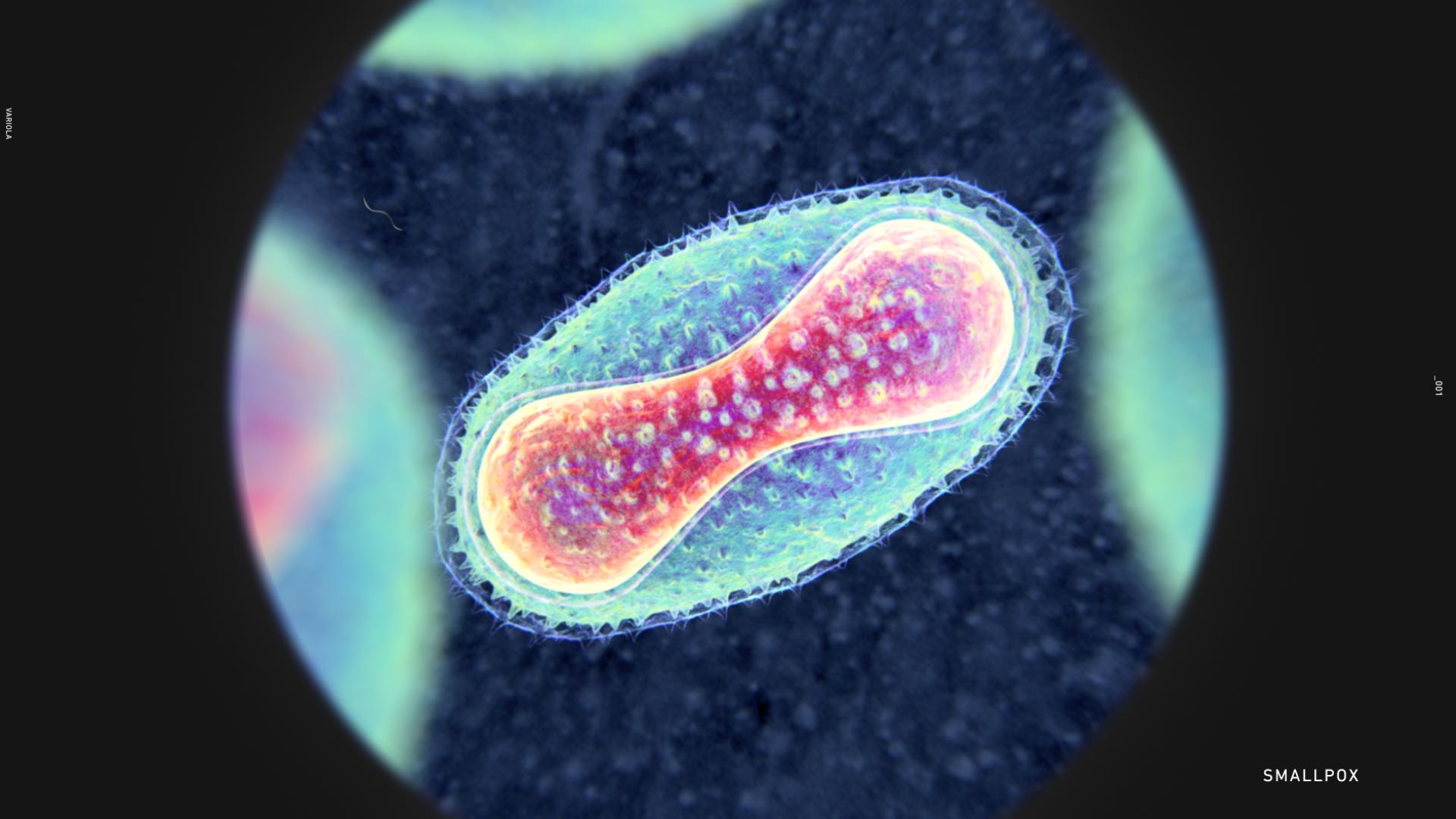 The liver is generally considerably heavier than normal, but this does not appear to be due to engorgement or fatty infiltration. Encephalitis is an occasional complication.
The liver is generally considerably heavier than normal, but this does not appear to be due to engorgement or fatty infiltration. Encephalitis is an occasional complication.
Immune Response
The human immune response to viruses is a complicated process about which much has yet to be discovered. Furthermore, knowledge of interactions between the immune system and variola virus is limited because modem techniques for the study of immune responses were developed after smallpox was eradicated.
At least three types of cells are involved: macrophages, dendritic cells, and lymphocytes. Macrophages and dendritic cells process antigens for presentation to T cells (thymus-derived lymphocytes, of which there are several subclasses). Macrophages and dendritic cells may acquire antigen at a given location from which they migrate to specialized lymphoid tissue—lymph nodes—the architecture of which allows for the cell-cell interactions required for a proper immune response. Importantly, certain antigen-presenting cells are able to be infected with different viruses, including orthopoxviruses.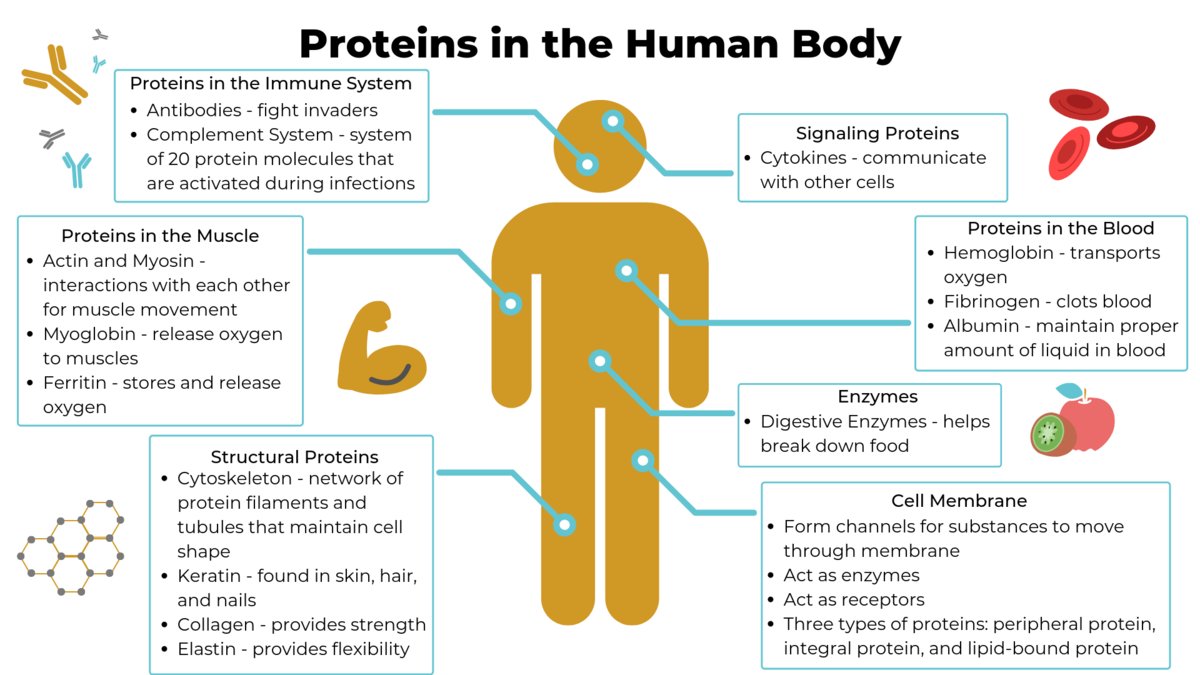
B cells are responsible for producing immunoglobulin, and often require help from T cells to do so. Such B lymphocytes have immunoglobulins on their cell surface that function as antigen-specific receptors. When an antigen triggers the B cell receptor and when appropriate help is delivered to the B cells by T lymphocytes or their secreted products, the B cells are stimulated to respond clonally. B cells differentiate into antibody-secreting plasma cells or long-lived memory cells, which are critically important in mounting a secondary response upon re-exposure to antigen.
While immunoglobulins can recognize antigen directly, the antigen-specific receptors on T lymphocytes interact with antigens on the surface of cells that present antigen in the form of short peptides (8–15 amino acids) in a complex with products of the Major Histocompatibility Complex (MHC). The generation of the peptides requires the proteolytic conversion of protein antigens into suitably sized peptides (antigen processing)..jpg) The complicated series of reactions between antigen-presenting and T cells serves to announce to the immune system the presence of intracellular pathogens such as viruses. Not surprisingly, a number of viruses have evolved mechanisms that deflect this process, presumably helping them avoid immune recognition.
The complicated series of reactions between antigen-presenting and T cells serves to announce to the immune system the presence of intracellular pathogens such as viruses. Not surprisingly, a number of viruses have evolved mechanisms that deflect this process, presumably helping them avoid immune recognition.
T cells respond specifically to MHC antigen presentation by clonal expansion. When activated, they secrete active substances called cytokines. As with B cells, a subset of activated T cells become long-lived memory cells. There are subclasses of T cells that have different functions. Some act to modulate B cells and other T cells by enhancing or suppressing their proliferation or their production of antibodies or cytokines. T cells that recognize viral proteins differentiate on contact with a specific antigen to release cytokines, such as gammainterferon. Such cells cause delayed-type hypersensitivity reactions, thereby attracting other inflammatory cells to the sites of infection. Certain T cells are cytotoxic and actively destroy cells exhibiting specific viral proteins composed of MHC products on their surface.
Certain T cells are cytotoxic and actively destroy cells exhibiting specific viral proteins composed of MHC products on their surface.
During infection with a virus as complex as an orthopoxvirus, antibodies specific to many different viral proteins are generated. Antibodies of three types have received specific attention: (1) those that neutralize viral infectivity; (2) those that, in conjunction with other proteins, Icad to lysis of virus-infected cells; and (3) those that combine with circulating antigens to produce immune complexes. Information about T cell responses to smallpox is very limited. However, in other viral infections, T cell responses often precede the appearance of neutralizing or other antibodies. Clearance of virus in many situations correlates with activation and expansion of virus-specific T cells. The kinetics of the appearance of antibodies is often slower than the initiation of T cell responses in the generation of cytotoxic T cells and T cells that produce interferon-gamma or other cytokines. This may be the case for smallpox as well, although the molecular tools needed to evaluate this question were not available when the disease was prevalent.
This may be the case for smallpox as well, although the molecular tools needed to evaluate this question were not available when the disease was prevalent.
In nonhemorrhagic smallpox, hemagglutinin-inhibiting (HI) and neutralizing antibody titers increase from about the sixth day of illness (approximately l g days after infection), and most patients develop immunoprecipitating antibodies that can be demonstrated by Ouchterlony-like gel precipitation assay about 2 days later. Patients with the rare hemorrhagic type of smallpox have much-reduced neutralizing antibody responses. HI titers rise and are approximately the same for patients with either ordinary or hemorrhagic smallpox. Lowered numbers of both T cells and B cells have been observed in smallpox patients, but the subtypes of the T cells have not been determined.
The best information on the relative importance of cell-mediated and humoral immune responses to orthopoxvims infections in humans comes from studies of human subjects in immune-deficient states who are subsequently vaccinated with vaccinia virus. In children with immunological defects in cell-mediated immunity, vaccinia virus replicates without restriction, resulting in a continually progressive primary lesion, persistent viremia, and widespread secondary viral infection of many organs. In patients with thymic dysplasia and partially or completely intact immunoglobulin-synthesizing capacity (Nezelofs syndrome), the progression is slower and less persistent, but usually results in death. Delayed-type hypersensitivity reactions are not evoked in patients with progressive vaccinia, nor can their peripheral blood lymphocytes be stimulated to undergo mitosis by exposure to inactivated vaccinia virus. Although neutralizing antibody is sometimes present in the serum, its presence does not prevent the development of progressive vaccinia if cell-mediated immunity is defective.
In children with immunological defects in cell-mediated immunity, vaccinia virus replicates without restriction, resulting in a continually progressive primary lesion, persistent viremia, and widespread secondary viral infection of many organs. In patients with thymic dysplasia and partially or completely intact immunoglobulin-synthesizing capacity (Nezelofs syndrome), the progression is slower and less persistent, but usually results in death. Delayed-type hypersensitivity reactions are not evoked in patients with progressive vaccinia, nor can their peripheral blood lymphocytes be stimulated to undergo mitosis by exposure to inactivated vaccinia virus. Although neutralizing antibody is sometimes present in the serum, its presence does not prevent the development of progressive vaccinia if cell-mediated immunity is defective.
Orthopoxvirus-specific T cell and B cell memory can be thought of as involving previously induced lymphocytes that persist as long-lived but nonactivated cells sequestered in lymphoid tissue and in the recirculating pool of lymphocytes. The effectiveness of memory T cells in providing protective immunity against orthopoxviruses decreases as the interval between primary and secondary infection increases.
The effectiveness of memory T cells in providing protective immunity against orthopoxviruses decreases as the interval between primary and secondary infection increases.
Immunity Against Smallpox
All orthopoxviruses induce cross-protective immunity in susceptible laboratory animals. Indeed, that is one of the ways of identifying members of the genus and is the basis for currently available vaccines. Among the orthopoxviruses that infect humans, cowpox and vaccinia viruses usually produce only local lesions and minimal systemic disturbance. Variola and monkeypox viruses cause serious systemic disturbance with high case-fatality rates. The observation that recurrences of smallpox were very rare had been made in ancient times, and led to attempts to ameliorate the severity of smallpox by administering pustular fluid or dried scab material to the nostrils or skin of persons who had not yet contracted smallpox. Much later, it was observed that similar protection against smallpox could be obtained by administering cowpox or vaccinia virus.
The process of inoculating smallpox material is called variolation to distinguish it from vaccination, which uses cowpox or vaceinia virus. After variolation of the skin, a primary lesion develops at the inoculation site on about the third day, and satellite pustules are common. But the rash is usually much less severe than with naturally occurring smallpox. Historically, case-fatality rates were between 0.5 and 2 percent after variolation, compared with 20 to 30 percent from natural smallpox. Since the virus material used was not attenuated, it was possible for those receiving variolation to transmit ordinary smallpox to susceptible contacts.
Early in the 18th century, the variolation procedure spread through the Balkans into central Europe and from Turkey to Great Britain and the rest of Europe. Subsequently, Jenner confirmed earlier observations that a person who had suffered cowpox did not get smallpox. In 1796 he took matter from cowpox lesions on the hand of Sarah Nelmes, a young dairymaid, and used it to inoculate an 8-year-old boy. After the boy’s slight fever and iow-grade lesion disappeared, Jenner attempted to variolate him by inoculating him with smallpox. The primary lesion did not develop, and protection was complete [12]. The educated public was receptive to this discovery. Jenner’s vaccine was a way of providing the advantages of variolation without the associated risks, and there was no doubt that cowpox produced a much less severe disease than variolation. To recognize Jenner’s contribution, Louis Pasteur later proposed that this method of protecting against infectious diseases be called vaccination and the product used a vaccine, although the general process is now usually called immunization.
After the boy’s slight fever and iow-grade lesion disappeared, Jenner attempted to variolate him by inoculating him with smallpox. The primary lesion did not develop, and protection was complete [12]. The educated public was receptive to this discovery. Jenner’s vaccine was a way of providing the advantages of variolation without the associated risks, and there was no doubt that cowpox produced a much less severe disease than variolation. To recognize Jenner’s contribution, Louis Pasteur later proposed that this method of protecting against infectious diseases be called vaccination and the product used a vaccine, although the general process is now usually called immunization.
At some unknown point in time, vaccinia virus became substituted for cowpox virus, probably because it produced generally milder lesions and lower fever. Modern vaccination against smallpox consists of abrading the skin with vaccinia virus, which may subsequently spread to the lymph nodes and spleen, organs heavily involved in initiating the immune response (as discussed earlier). The result of spread to these sites is the induction of cell-mediated and humoral immunity, and long-lived memory T and B cells that recognize the virus. Replication of variola virus is completely prevented for a few years, and thereafter replication is limited so that infection is subclinical, causing no symptoms. Immunity wanes over time and can decline to levels that do not protect against illness, although the severity of disease is likely to be reduced.
The result of spread to these sites is the induction of cell-mediated and humoral immunity, and long-lived memory T and B cells that recognize the virus. Replication of variola virus is completely prevented for a few years, and thereafter replication is limited so that infection is subclinical, causing no symptoms. Immunity wanes over time and can decline to levels that do not protect against illness, although the severity of disease is likely to be reduced.
Passive immunization, as a natural consequence of either transmission of antibodies from mother to progeny or the administration of antisera, is less effective in modifying the course of disease than active immunization involving live virus. Active immunity, whether elicited by vaccination or the disease, provokes the complete range of cell-mediated and humoral immune responses, whereas passive immunization provides only the antibodies present in the source of the sera.
Three groups of complications occurred in a small number of vaccinated subjects: abnormal skin eruptions, disorders affecting the central nervous system, and a variety of other rarer or less severe complications. Although trivial compared with the problems historically associated with smallpox, these complications posed significant health risks when smallpox receded. Therefore, vaccination was discontinued once smallpox had been eradicated globally.
Although trivial compared with the problems historically associated with smallpox, these complications posed significant health risks when smallpox receded. Therefore, vaccination was discontinued once smallpox had been eradicated globally.
Smallpox Facts – MN Dept. of Health
On this page:
How much of a threat is smallpox?
What are the symptoms of smallpox?
How long does it take to develop smallpox, once you’re exposed? And when do you become capable of infecting other people?
How contagious is smallpox?
Is there a treatment for smallpox?
- Download PDF version of this document formatted for print: Smallpox – English (PDF)
- Amharic (PDF)
- Arabic (PDF)
- Hmong (PDF)
- Khmer (PDF)
- Laotian (PDF)
- Oromo (PDF)
- Russian (PDF)
- Serbo-Croatian (PDF)
- Somali (PDF)
- Spanish (PDF)
- Vietnamese (PDF)
How much of a threat is smallpox?
Characterized by fever and a distinctive type of rash, smallpox was once one of the leading health threats facing the human species. Caused by a virus, smallpox used to kill up to a third of the people who developed the illness.
Caused by a virus, smallpox used to kill up to a third of the people who developed the illness.
However, by 1980, smallpox was effectively eliminated as a public health concern, thanks to a major campaign conducted by the World Health Organization. The last known case – anywhere in the world – was reported in the late 1970s. Since no animals other than humans are known to carry or transmit smallpox, the risk of getting the illness had effectively been reduced to zero.
Unfortunately, smallpox may not be completely behind us. A few samples of the smallpox virus were kept for laboratory use after the illness was eradicated – and there is now reason to believe that the virus may have been adapted for use as a weapon. The possibility of a smallpox outbreak, caused by a deliberate release of the virus, is now regarded as a real possibility. The likelihood of a terrorist attack using smallpox is thought to be very low. However, the consequences of such an attack – if it did occur – would be very serious.
What are the symptoms of smallpox?
The symptoms of smallpox begin with a high fever, head and body aches and, in some cases, vomiting. After two to four days, a rash appears. The rash spreads, and develops into raised bumps that crust and scab over. After about three weeks, the scabs fall off, leaving pitted scars.
How long does it take to develop smallpox, once you’re exposed? And when do you become capable of infecting other people?
The first symptoms of smallpox usually show up about 12-14 days after a person has been exposed to the illness, although symptoms can take as little as seven days or as long as 17 days to appear. Once the first symptoms appear, the patient is usually too ill to travel or engage in most forms of activity. The patient doesn’t become infectious – capable to transmitting the disease to others – until the rash appears.
How contagious is smallpox?
Smallpox is contagious, but it’s spread less easily than illnesses like influenza or measles. Generally, it takes prolonged, face-to-face contact – of the kind that takes place in a household setting – to spread the disease from one person to another. It can also be spread through direct contact with body fluids, or objects like bedding and clothing. It can also be spread through the air in buildings or other enclosed spaces, although that happens less commonly.
Generally, it takes prolonged, face-to-face contact – of the kind that takes place in a household setting – to spread the disease from one person to another. It can also be spread through direct contact with body fluids, or objects like bedding and clothing. It can also be spread through the air in buildings or other enclosed spaces, although that happens less commonly.
Is there a treatment for smallpox?
There is currently no proven treatment for smallpox. However, it can be prevented through vaccination.
The vaccine can still protect people even after they’ve already been exposed to the smallpox virus. While no vaccine offers perfect protection, vaccinating within three days after being exposed to smallpox offers the same level of protection as getting vaccinated before you’re exposed. Vaccinating within seven days will tend to lessen the severity of any illness resulting from exposure to smallpox.
However, the vaccine can cause serious, potentially fatal reactions in some people, so the benefits of vaccination need to be balanced against the risks. At a minimum, it’s been estimated that roughly one out of every million people who receive the vaccine will die – and 15 will become very seriously ill. And unless someone does use the disease as a weapon, the risk of becoming ill with smallpox is zero.
At a minimum, it’s been estimated that roughly one out of every million people who receive the vaccine will die – and 15 will become very seriously ill. And unless someone does use the disease as a weapon, the risk of becoming ill with smallpox is zero.
Monkeypox: symptoms, distribution, treatment
The largest outbreak of monkeypox in Europe and the USA is gaining momentum. We understand what kind of disease it is, whether it is associated with smallpox and whether it is worth waiting for a new pandemic Its closest and most famous relative is the variola virus, which is considered eradicated worldwide: the last confirmed outbreak was in 1978, and in 1980, WHO officially announced the complete eradication of the disease.
Monkeypox was first discovered in 1958 in laboratory monkeys, hence the official name of the virus, Monkeypox virus. The first confirmed case of human infection with monkeypox was reported in 1970 in the Democratic Republic of the Congo, and since then the disease has been regularly diagnosed in Central and West Africans. In 2017, an outbreak began in Nigeria, which is still ongoing.
In 2017, an outbreak began in Nigeria, which is still ongoing.
The disease has also been identified outside of Africa: in 2003, 70 people in the United States developed monkeypox, presumably due to contact with infected rodents. The disease has also previously been detected in Israel in 2018, in the UK in 2018, 2019 and 2021, in Singapore in 2019 and in the US in 2021.
Monkeypox infection. How dangerous is it and is there a vaccine – RBC
How the 2022 monkeypox outbreak is different
On May 7, 2022, monkeypox infection was confirmed in a UK resident who returned from Nigeria, a region endemic for the disease. The man was isolated and received the necessary medical attention, and the UK Health Security Agency (UKHSA) and the UK National Health Service (NHS) said they would contact passengers on the flight that the infected passenger was on. However, on May 14, 2 more cases of the disease were detected in the UK, which were in no way connected with the first patient, and on May 16, 4 more sick people were found who were not in contact with the three previous infected.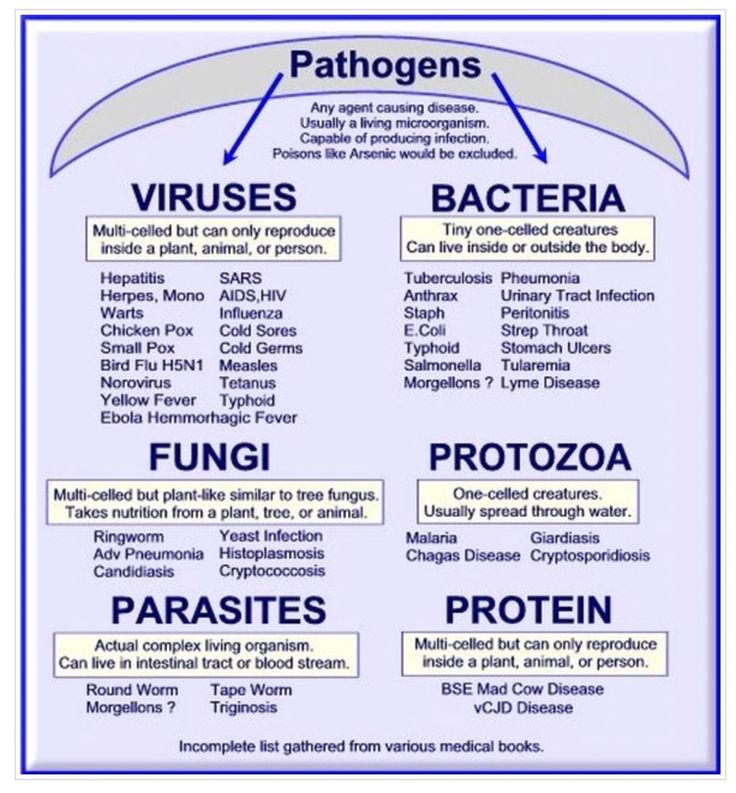 According to the UKHSA, as of July 7, over 1.5 thousand patients with a confirmed diagnosis of monkeypox were registered in the UK.
According to the UKHSA, as of July 7, over 1.5 thousand patients with a confirmed diagnosis of monkeypox were registered in the UK.
Infection has begun to spread to other non-endemic countries: Australia, Belgium, France, Germany, Italy, the Netherlands, Portugal, Spain, Sweden, Great Britain, USA, Switzerland, Israel, Canada, UAE, Czech Republic, Slovenia, Austria, Denmark, the Canaries islands. Previously, isolated cases of monkeypox outside of Africa were associated mainly with travelers returning from endemic countries, but hundreds of confirmed and suspected cases of monkeypox have now been found in people who did not visit endemic areas before infection. “Suspicious” patients, in accordance with WHO terminology, are people with an acute fever or one of the characteristic symptoms that cannot be explained by other pathologies. At the moment, there are already more infected people in countries outside of Africa than there have been since the discovery of the virus.
Rospotrebnadzor reported the first case of monkeypox in Russia on 12 July 2022. The patient was a young man who had recently returned from Europe. In total, by July 11, monkeypox infections were recorded in 59 non-endemic states and territories.
The patient was a young man who had recently returned from Europe. In total, by July 11, monkeypox infections were recorded in 59 non-endemic states and territories.
How monkeypox is transmitted
Monkeypox is a zoonosis, meaning it is most commonly transmitted to humans from infected wild animals such as rodents, through direct contact with blood and bodily fluids, bites, or ingestion of poorly processed meat. Transmission from person to person is possible through sputum by airborne droplets, through biological fluids, household items used by the infected person, but long-term close contact with the sick person is required for infection.
The virus can enter the body through mucous membranes, respiratory organs and even small wounds on the skin. At risk of infection are medical workers who have been in contact with sick people without personal protective equipment, and people living with infected people. According to the WHO, it is still unclear whether monkeypox is sexually transmitted. University of California epidemiologist Dr. Anna Rimouin, in a commentary to the journal Nature, notes that infection of a partner during sexual activity can only be associated with prolonged close contact. However, WHO is currently investigating cases of virus detection in seminal fluid previously reported by Italian scientists.
University of California epidemiologist Dr. Anna Rimouin, in a commentary to the journal Nature, notes that infection of a partner during sexual activity can only be associated with prolonged close contact. However, WHO is currently investigating cases of virus detection in seminal fluid previously reported by Italian scientists.
Symptoms of monkeypox
Monkeypox is clinically similar to natural smallpox, although it is much milder. The incubation period of the disease is 5–21 days, with an average of 6–13 days. The first manifestations of the disease:
- febrile fever – more than 38.5º;
- chills;
- severe headache;
- great debility;
- lymphadenopathy – swollen lymph nodes;
- myalgia – muscle pain;
- back pain.
On average, 1-3 days after the first symptoms, a macular rash appears – flat red spots – most often on the face, palms and feet, less often on the mucous membranes of the mouth, genitals and conjunctiva – the connective membrane of the eyes. Over time, the elements of the rash change.
Over time, the elements of the rash change.
Main stages of rash development:
- Maculae – spots.
- Papules are red “nodules” on the skin that turn into macula about 3 days after the onset of the rash.
- Vesicles – vesicles filled with a clear liquid appear on the 4-5th day.
- Pustules – abscesses, appear on the 6-7th day and dry up by the end of the second week of the disease.
- Crusts.
After the removal of the crusts, the recovered person may have scars or areas of pigmentation on the skin.
Illness lasts 2-4 weeks. The severity of symptoms depends on the age, chronic diseases of the infected person and the strain of the virus – the West African subspecies, which has spread throughout Europe and the United States, is more easily tolerated than the Congo (Central African) strain. The virus is especially dangerous for children, pregnant women, and immunocompromised people (such as those taking immunosuppressive drugs or those who are immunocompromised).
Possible complications of infection:
- addition of secondary bacterial infections,
- bronchopneumonia (acute inflammation of the walls of bronchioles),
- sepsis,
- encephalitis (inflammation of the brain),
- damage to the cornea that can lead to loss of vision.
The mortality rate, according to WHO, for the West African strain is 3.6%, for the Congo strain – 10.6%.
How monkeypox is diagnosed
The most effective method for diagnosing monkeypox is PCR. For analysis, samples of the skin affected by a rash are taken – liquid from vesicles, crusts, and so on. PCR blood tests are rarely used: the duration of viremia – the presence of infectious particles in the patient’s blood – is too short, and the result may be false. In order to correctly interpret the results, healthcare professionals also need information about the date of onset of fever, rash, sample collection, and the current stage of the rash.
Monkeypox treatment and vaccination
The antiviral drug Tecovirimat, registered for the treatment of smallpox, is also effective against monkeypox, according to the WHO. In addition, symptomatic therapy is used to alleviate the manifestations of the disease and antibiotic therapy to treat the associated bacterial infection. Usually the disease is well tolerated, the symptoms disappear within 2-4 weeks, and specific therapy is not required.
The variola virus vaccine has been reported by the WHO to protect against monkeypox by 85% due to cross-immune responses to orthopoxviruses. That is why the risk of infection is increased among representatives of the younger generation, who were not vaccinated against the variola virus according to state programs after its eradication – complete eradication.
In 2019, a new vaccine specifically for monkeypox was also registered.
Why monkeypox is dangerous for humans
Dado Ruvic / Reuters
US authorities are looking for more than 200 people from 27 states who may have come into contact with a person with monkeypox.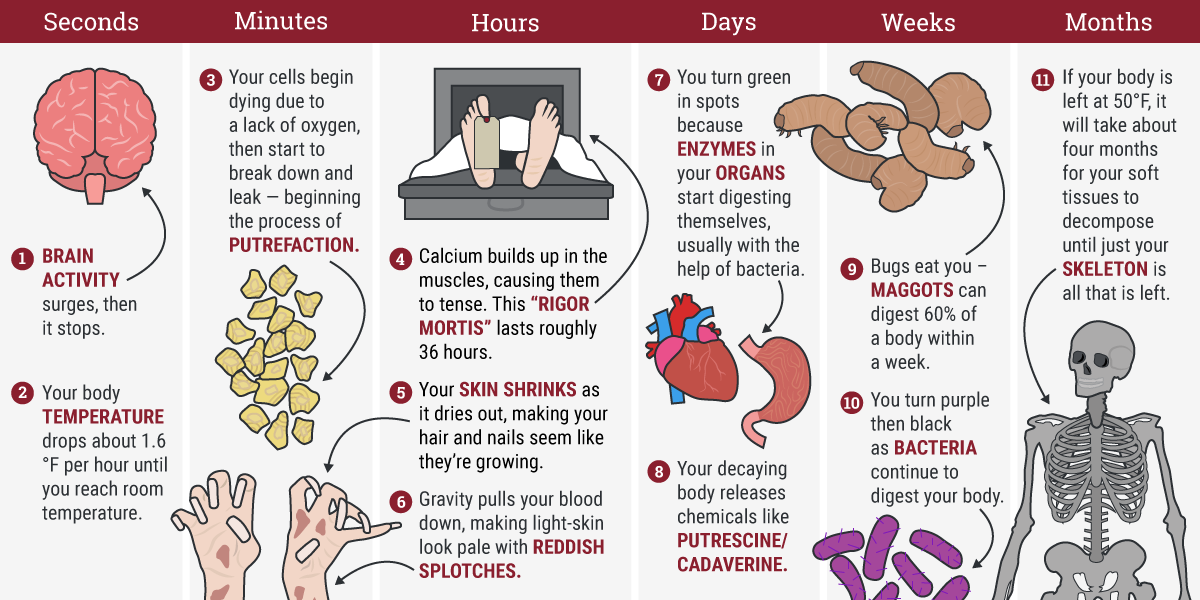 A resident of Texas contracted it during a trip to Nigeria. From there he flew to Atlanta (Georgia) and there he made a transfer to a plane to Texas, where he was hospitalized. Now they are looking for other passengers.
A resident of Texas contracted it during a trip to Nigeria. From there he flew to Atlanta (Georgia) and there he made a transfer to a plane to Texas, where he was hospitalized. Now they are looking for other passengers.
This news seems to be topical. But in fact, we are talking about the events of July 2021. Then the tourist recovered, no one got infected. In November of the same year, another case was discovered in the United States, he also went to Nigeria, fell ill and recovered safely.
The very first outbreak of monkeypox in the West was far more serious. In 2003, 47 people were infected in the United States, and no one died. The outbreak was traced back to patient zero: a marsupial rat (aka Gambian hamster rat) imported from Ghana to America infected domestic prairie dogs, which infected their owners in six states. Someone was bitten by a pet, someone took the litter with bare hands. But in no case was the infection transmitted from person to person.
Eight people have been reported to have monkeypox in the US. The most affected countries in the West are the UK with 71 confirmed cases, Spain with 51 and Portugal with 30. Moreover, according to El Pais newspaper, the infection has been circulating in Madrid since April – there is data on a patient with very similar symptoms of the disease. In total, in Western countries (excluding Africa), according to WHO, 229 cases.
The most affected countries in the West are the UK with 71 confirmed cases, Spain with 51 and Portugal with 30. Moreover, according to El Pais newspaper, the infection has been circulating in Madrid since April – there is data on a patient with very similar symptoms of the disease. In total, in Western countries (excluding Africa), according to WHO, 229 cases.
Last Friday, May 20, Belgium became the first country to introduce a mandatory 21-day quarantine for monkeypox patients. All three of its citizens, who were ill at that time, had previously attended the fetish festival in Antwerp. But even those who have been in close contact with the infected are not required by the authorities to self-isolate.
Conspiracy Theory
Conspiracy theorists greeted the news of the smallpox outbreak with enthusiasm. China and the United States have already blamed each other for the COVID-19 epidemic: the Americans talked about the laboratory in Wuhan, and the Chinese about developing the virus at the American military base. Now Chinese blogger Shu Chan writes on Weibo that the US had a plan to “leak the bioengineered monkeypox virus,” according to Fortune magazine. Shu refers to the Nuclear Threat Initiative (NTI), an American NGO whose founders include former US Senator Sam Nunn. This NGO is calling for more authority and funding for international organizations such as the UN and WHO.
Now Chinese blogger Shu Chan writes on Weibo that the US had a plan to “leak the bioengineered monkeypox virus,” according to Fortune magazine. Shu refers to the Nuclear Threat Initiative (NTI), an American NGO whose founders include former US Senator Sam Nunn. This NGO is calling for more authority and funding for international organizations such as the UN and WHO.
Vaccination in Russia
Vaccination against smallpox officially began in Russia on October 23, 1768, when Catherine the Great and her son, the future Emperor Paul I, performed the operation. Doctor Thomas Dimsdale, called from London, performed the operation. It was not a vaccination, but the so-called variolation – particles of smallpox or the contents of smallpox vesicles of patients were placed in an open wound of a healthy person. For successful variolation, Dimsdale was awarded the title of hereditary baron, the title of a medical doctor, the rank of real state councilor and a lifetime pension. The boy Alexander Markov was also awarded, from whom the material for variolation was taken. He received the nobility and a new surname – Ospenny.
He received the nobility and a new surname – Ospenny.
And in 1796, the English physician Edward Jenner publicly experimented with cowpox inoculation. This is how the concept of a vaccine appeared, from the Latin vaccinus – “cow”, and the technology, thanks to which it was possible to defeat smallpox. But for a long time, anti-vaccine movements raged in many countries. In particular, they assured that the upper classes wanted to control the lower classes with the help of vaccination.
To illustrate the need for this, NTI modeled the development of a new pandemic and presented it with pomp in 2021 at the Munich Security Conference. According to the scenario, the terrorists steal a dangerous pathogen artificially created there from the biolaboratory. The outbreak begins in the fictional country of Brinia, spreads around the world and lasts 18 months, 3 billion people fall ill and 270 million patients die.
Simulation creators assigned an artificially modified monkeypox virus to the role of a terrible pathogen. By an unfortunate coincidence, the current outbreak in the West began on May 7 with an identified patient in Britain – why not Brinia?
By an unfortunate coincidence, the current outbreak in the West began on May 7 with an identified patient in Britain – why not Brinia?
Bill Gates also added fuel to the fire. He wants governments to invest billions of dollars in an international organization that will fight pandemics. To give weight to his words, Gates publicly warned many times about the danger of a new epidemic, such as smallpox.
Greetings from Africa
But the first case of human infection with monkeypox was known as early as 1970. In a village in the Congo, a nine-year-old boy fell ill with what appeared to be smallpox, although in that area, thanks to vaccinations, the disease was already two years since eradicated. They began to investigate, and it turned out that this was indeed smallpox, but not the one that was feared.
Both diseases are very similar. After an incubation period of 7 to 14 days (sometimes 5 to 21 days), fever, headache, muscle pain, and chills may occur. A rash appears 1-3 days after infection, which eventually turns into blisters filled with pus. According to WHO statistics, most often they are localized on the face (in 95% of cases), on the palms and feet (in 75% of cases). The main difference with smallpox is that monkeypox patients have swollen lymph nodes. The disease is considered self-healing and disappears in two to three weeks.
A rash appears 1-3 days after infection, which eventually turns into blisters filled with pus. According to WHO statistics, most often they are localized on the face (in 95% of cases), on the palms and feet (in 75% of cases). The main difference with smallpox is that monkeypox patients have swollen lymph nodes. The disease is considered self-healing and disappears in two to three weeks.
/ CHARLES BOUESSEL / AFP
On average, several thousand cases are found in Africa every year, usually in the western and central parts of the continent, writes Nature. Unfortunately, there is only fragmentary WHO information about this disease in Africa, virologist Pavel Volchkov, head of the MIPT laboratory of genomic engineering, told Vedomosti. “For example, there was recently an outbreak of monkeypox in Nigeria, now it is contained, but still ongoing. What is happening in neighboring regions is not known due to socio-political instability and armed conflicts,” the scientist says.
The case fatality rate for smallpox (eradicated in the late 1970s) was 30%. Monkeypox has much less. It is of two types. The strain common in the Congo is more severe, the lethality from it is about 10%. The West African strain is lighter – about 1% lethality. As part of the new outbreak in the West, not a single death from monkeypox has yet been recorded.
Monkeypox has much less. It is of two types. The strain common in the Congo is more severe, the lethality from it is about 10%. The West African strain is lighter – about 1% lethality. As part of the new outbreak in the West, not a single death from monkeypox has yet been recorded.
On May 19, Portuguese researchers began deciphering the genome of the virus that came to the West. They believe that we are talking about a milder West African version, reports Nature. But we are not yet ready to say whether the virus has mutated.
What’s more expensive because of smallpox
According to the WHO, smallpox vaccines (the same vaccines given to many older generations as children) are 85% effective against monkeypox.
Danish biotechnology company Bavarian Nordic, which specializes in the production of smallpox vaccines, has risen sharply amid fears of a new pandemic. In early May, their value fell below 120 Danish kroner per share, and now the paper has broken through the mark of 220 kroner. The company announced on May 18 that the US had placed an order for $119million and an option for $180 million, which would give America 13 million doses of vaccines.
The company announced on May 18 that the US had placed an order for $119million and an option for $180 million, which would give America 13 million doses of vaccines.
And on May 19 it became known that a certain European country also ordered a vaccine from Bavarian Nordic. The name of the state and the details of the contract were not disclosed. The vaccine is registered under the jynneos brand in the US, Imvamune in Canada, and approved against monkeypox in both countries. In Europe, it is sold as Imvanex and is officially indicated only for the prevention of smallpox, but in practice it has also been used to vaccinate those at risk of contracting monkeypox, the company said.
Bavarian Nordic began developing a vaccine for the US government back in 2003 and has delivered almost 30 million doses to the US to date, according to its website. And most were sold before the FDA approved it in 2019. Officials took advantage of the provision allowing the purchase of a vaccine for emergency use even before obtaining all the necessary approvals (the same mechanism used to vaccinate against coronavirus until the end of the trial). Part of the funds Bavarian Nordic allowed to conduct the third phase of clinical trials.
Part of the funds Bavarian Nordic allowed to conduct the third phase of clinical trials.
Why monkeypox isn’t really monkeypox
Monkeypox may not have been named that way. Its natural reservoir (in other words, the long-term host of the virus) is still unknown, University of Texas professor Rodney Rode argues on the pages of The Conversation online publication. African rodents are thought to play an important role in the transmission of the virus. In addition to Gambian marsupial rats, these can be dormice and African squirrels. But for the first time the disease was documented by Danish scientists, who at 1958, there were two outbreaks among experimental monkeys, so the pox is not rat or squirrel pox, but monkey pox.
Mass vaccination against smallpox in the United States was discontinued as early as 1972 due to the victory over this disease. But as a precaution against bioterrorism, as a precaution against bioterrorism, America, like many other countries, keeps a stockpile of vaccines and renews them periodically, Nature notes. In the event of the use of biological weapons, a stock of medicines for the sick is also kept.
In the event of the use of biological weapons, a stock of medicines for the sick is also kept.
There is no specific treatment for monkeypox, according to the CDC (US Centers for Disease Control and Prevention). For most people, monkeypox clears up on its own within a few weeks, according to the WHO. But it is possible to use drugs to help patients. For example, FDA-approved Tpoxx (tecovirimat) manufactured by Siga Technologies or Tembexa (brincidofovir), the rights to which Emergent Biosolutions acquired from the developer Chimerix for $325 million just a week ago. Shares of these companies also rise in price against the backdrop of recent news.
Virus benefit
Acting Director of the African Centers for Disease Control and Prevention (Africa CDC) Ahmed Ogwell Ouma recently complained that during the COVID-19 pandemic in Africa, several outbreaks of monkeypox were contained, but no one in the world paid attention to this – everyone was talking only about the coronavirus . From time to time, monkeypox got outside of Africa, as a rule, it was brought by tourists or brought along with animals.
From time to time, monkeypox got outside of Africa, as a rule, it was brought by tourists or brought along with animals.
The virus is believed to be spread by close contact with body fluids through broken skin, inhalation, or through the mucous membranes of the eyes, nose, or mouth. For example, you can become infected after being bitten by a sick animal. Or by eating the undercooked meat of an infected animal (although this is hardly a case typical of the West). Another option is contact with contaminated surfaces, such as when removing bedding from a cage. In the UK, a 2018 case of smallpox transmission from a tourist in Nigeria to a hospital worker in Newcastle raised alarm, the BBC reported. But, most likely, the virus was transferred in the process of contact with the patient’s bed linen, and not personal contact.
This year’s monkeypox outbreak is different in that the virus appears to be transmitted from person to person. According to scientists, this is possible with very long close contact.:max_bytes(150000):strip_icc()/zika-virus-symptoms1-5af1c89cba6177003655c0a4.png) For example, if you talk for hours with a coughing interlocutor. It is also puzzling that a number of the sick did not come into direct contact with the sick and did not travel abroad.
For example, if you talk for hours with a coughing interlocutor. It is also puzzling that a number of the sick did not come into direct contact with the sick and did not travel abroad.
Another mystery is why there are many men who identify themselves as gay or bisexual among the sick. Perhaps the fact is that the virus first got into their environment, and these people are periodically in long-term contact. The British newspaper Daily Mail assures that if this trend does not change, the authorities will offer them to be vaccinated. And the British Health Safety Agency reassures that monkeypox is not considered a sexually transmitted infection.
Should we expect monkeypox in Russia? It is incomparably more difficult to catch it, while the coronavirus can be picked up by being close to the carrier for a short time. The smallpox virus is well understood, and there are vaccines, treatment protocols, and diagnostics. For example, the Russian scientific center “Vector” reported that it had created and successfully conducted laboratory tests of the test system.

Unlike SARS-CoV-2, which regularly mutates to trick the immune system, the monkeypox virus is a relatively large DNA virus that is less likely to mutate, adds Nature. In addition, this disease, unlike SARS-CoV-2, is easy to detect by symptoms, which makes it easier to isolate the sick and localize the outbreak, Volchkov said.
Scientists seem to operate on the principle that it is better to play it safe. In addition, they are traditionally alarmed by any unusual behavior of the virus. The difficulty lies in the fact, Volchkov said, that smallpox vaccination was curtailed in the USSR and Europe in 1980–1990s after the disease has disappeared. Those born in the USSR before 1980 are vaccinated and have little to fear. Thanks to them, as stated by Rospotrebnadzor, there is a significant immune layer in Russia and the spread of monkeypox will be stopped. In addition, the department assesses the likelihood of its importation to Russia as low due to the restriction of air traffic with most countries where cases of the disease have been recorded.
